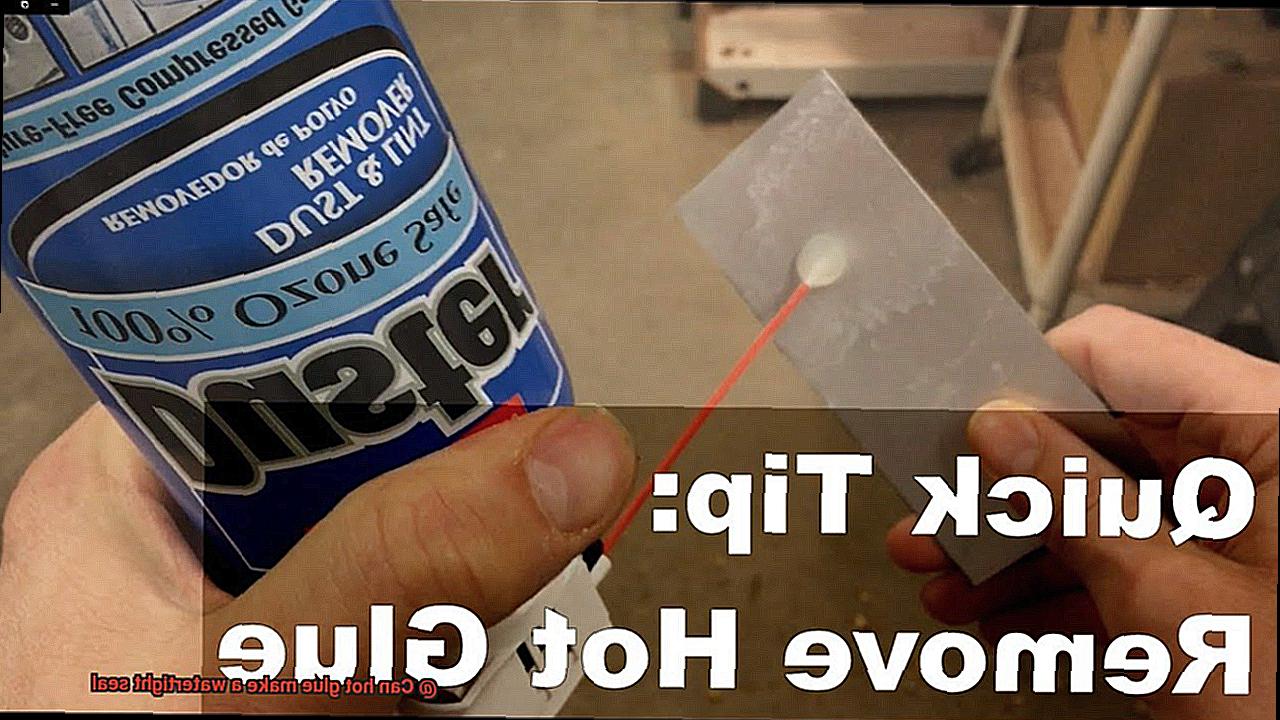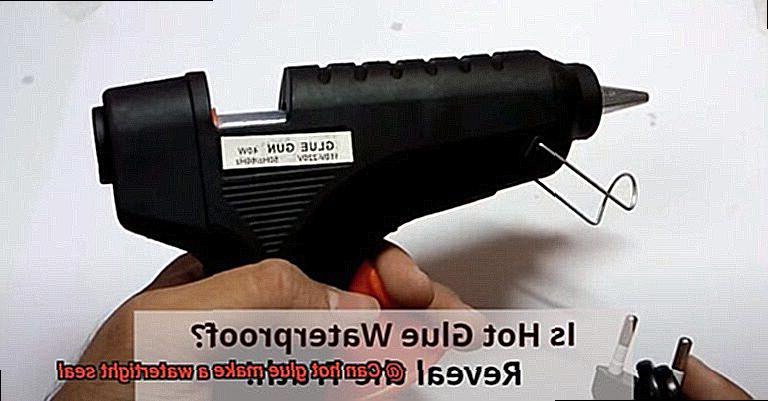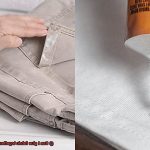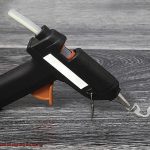Are you tired of constantly dealing with leaky household items and water damage? Do you need a quick and easy solution that won’t break the bank? Look no further than hot glue. That’s right, this versatile adhesive has been known to create a watertight seal.
Hot glue, also known as thermoplastic adhesive, has been a staple in various applications for decades. From crafting to woodworking to medical procedures, its ability to bond materials like metal, plastic, and fabric has made it a favorite among DIY enthusiasts and professionals alike.
But can hot glue withstand water pressure? The answer is yes – but not all hot glue is created equal. The strength and durability of a watertight seal depend on several factors: the type of hot glue used, the amount applied, and even the temperature of the water.
In this blog post, we’ll dive into the science behind hot glue’s sealing capabilities. We’ll explore the best types of hot glue for creating a watertight seal and provide tips for proper application. So grab your trusty glue gun and get ready to learn how hot glue can save you from unwanted water damage.
What is Hot Glue?
Contents
This versatile adhesive is made from synthetic polymers such as ethylene-vinyl acetate (EVA) or polyamide, which are melted and applied using a hot glue gun. The result is a bond that is strong, durable, and quick-drying.
Hot glue comes in various forms, including sticks, pellets, and sheets, which can be purchased in different sizes and shapes. It even has clear, colored, and glittery options, making it perfect for an array of projects. From scrapbooking to product assembly in industrial settings, hot glue is a reliable adhesive choice.

One of the advantages of hot glue is its relatively low melting point. This makes it easy to work with and allows for quick project completion. However, it may not bond well with certain surfaces like smooth or non-porous materials.
When it comes to creating a watertight seal, hot glue can be effective on non-porous surfaces such as glass or metal. However, on porous materials like fabric or wood, the hot glue may not create a completely watertight seal.
It’s important to note that temperature changes can affect the effectiveness of hot glue for watertight seals. Extreme temperatures could cause the adhesive to become brittle and lose its bond, which could compromise the seal.
How Does Hot Glue Work?
Hot glue is a wondrously versatile adhesive that can bond different materials together quickly and effectively. Whether you’re into arts and crafts, DIY repairs or industrial settings, hot glue is the go-to solution. But have you ever wondered how it actually works? As an expert on the topic, let me tell you all about it.
The magic of hot glue lies in its ability to melt solid glue sticks in a heated glue gun and apply the molten glue onto a surface. As the glue cools down, it solidifies, creating a bond between the two surfaces. But what makes hot glue so special?
The main component of hot glue is thermoplastic polymers, which are synthetic materials that can be melted and re-solidified multiple times without losing their properties. The most common thermoplastic polymer used in hot glue is ethylene-vinyl acetate (EVA), a flexible, durable and water-resistant material.
When hot glue is applied to a surface, it penetrates the small crevices and creates a mechanical bond by interlocking with the surface’s structure. This mechanical bond is stronger than adhesive bonds created by other types of glue like white glue or superglue.
But wait, there’s more. Hot glue also creates a chemical bond with some materials like paper, fabric and certain types of plastics. This chemical bond happens when the hot glue adheres to the material’s surface and forms a molecular bond by sharing electrons with the material’s molecules.
Overall, hot glue works by combining mechanical and chemical bonding mechanisms to create a strong and durable bond between different surfaces. It may not be suitable for all types of materials or applications, but it can be an effective solution for many DIY projects and repairs.
Can Hot Glue Make a Watertight Seal?
It’s easy to use, versatile, and creates a bond that’s stronger than other glues. But the big question remains: can hot glue make a watertight seal?
Well, it’s not as simple as just saying yes or no. Several factors come into play when determining whether hot glue can create a watertight seal. Let’s take a closer look.
Firstly, the type of hot glue being used matters. Low-temperature hot glue has a lower melting point and is perfect for delicate materials such as foam and paper. High-temperature hot glue, on the other hand, has a higher melting point and is more durable, making it suitable for bonding heavy materials such as wood and metal.
Secondly, the surface being bonded plays a significant role in determining whether hot glue can create a watertight seal. Hot glue works best on porous surfaces that allow the adhesive to seep in and create a strong bond. Non-porous surfaces such as glass and plastic may not provide enough surface area for the hot glue to adhere to, resulting in a weaker bond that may not be watertight.
Thirdly, the environment in which the bonded item will be used also affects whether hot glue can make a watertight seal. If you’re planning to use your project underwater or outdoors in rainy weather conditions, hot glue may not be suitable for creating a watertight seal. Extreme temperatures or moisture may compromise the adhesive properties of hot glue.
In conclusion, while hot glue is an excellent adhesive for porous surfaces, it may not always be suitable for making a watertight seal. Take into consideration factors such as the type of hot glue being used, the surface being bonded, and the environment in which the bonded item will be used before deciding whether hot glue is right for your project.
Pros and Cons of Using Hot Glue for a Watertight Seal
Hot glue is a popular choice thanks to its versatility, but it’s important to weigh the benefits and drawbacks before diving in.
One of the biggest advantages of hot glue is its quick drying time. Unlike other adhesives that can take hours or even days to set, hot glue dries within seconds, making it perfect for projects that require fast results. Additionally, it’s incredibly easy to apply and can bond with a variety of surfaces, including plastic, metal, and wood.
However, there are some potential drawbacks to using hot glue for a watertight seal. For one, it may not be as durable as other types of adhesives and may not hold up well over time when exposed to extreme conditions such as high temperatures or constant exposure to moisture. Additionally, hot glue may not work well on surfaces that are oily or greasy, which could impact its ability to create a strong bond.
It’s also important to note that hot glue may not be suitable for all types of projects. If your project involves items that will be submerged in water for an extended period, hot glue may not be the best option. In these cases, other types of adhesives that are designed specifically for underwater use may be more appropriate.
Tips for Making a Watertight Seal with Hot Glue
Hot glue is a versatile adhesive that can be used for a variety of projects, including creating a watertight seal. However, not all hot glues are created equal, and it’s important to choose the right type for the job. Here are five tips for making a strong and reliable watertight seal with hot glue.
Choose the Right Type of Hot Glue
When it comes to creating a watertight seal, not all hot glues are created equal. Look for a waterproof or marine-grade hot glue that is specifically designed to resist water and moisture. These types of hot glue are formulated with special additives that make them more resistant to water damage.

Clean and Dry the Surface
Before applying hot glue, make sure the surface is clean and dry. Any dirt, oil, or moisture on the surface can affect the adhesion of the hot glue and compromise the seal. Use a clean cloth or paper towel to wipe down the surface before applying the hot glue.
Apply in Layers
To create a strong and watertight seal, apply the hot glue in layers. Start with a thin layer and allow it to cool and harden before applying another layer. Repeat this process until you have built up enough layers to create a solid seal. This will help ensure that there are no gaps or bubbles in the seal that could allow water to seep through.
Use a Heat Gun or Hair Dryer
To speed up the cooling process and prevent the hot glue from melting or dripping, you can use a heat gun or hair dryer on a low setting to gently dry and cool the hot glue. This will help ensure that the hot glue sets properly and forms a strong bond.
Test Your Seal
Once you have applied the hot glue, let it dry completely before testing the seal. You can test the seal by filling the container or object with water and checking for any leaks or drips. If you find any leaks, you may need to apply additional layers of hot glue to reinforce the seal.
Alternatives to Hot Glue for a Watertight Seal
There are several alternatives available that can provide a long-lasting and reliable seal to prevent water damage.
One popular alternative is silicone sealant. This flexible and durable material can withstand exposure to water, UV rays, and extreme temperatures without breaking down. It can be applied to a variety of surfaces, including glass, metal, and plastic, and forms a tight seal that prevents water from seeping through. While it’s important to note that silicone can take up to 24 hours to fully cure, it’s worth the wait for its superior qualities.
Another option is epoxy resin, a two-part adhesive that creates a strong and waterproof bond when mixed together. Epoxy is ideal for projects that require a more permanent watertight seal, such as repairing leaks in pipes or sealing aquariums. Not only is it resistant to chemicals and UV rays, but it’s also versatile for both indoor and outdoor use.
If you’re in need of a quick and easy solution, duct tape can be used to create a temporary watertight seal. While not as durable as silicone or epoxy, duct tape can provide a reliable seal in emergency situations. Simply apply the tape over the area needing to be sealed and press down firmly for a tight hold.
Conclusion
In conclusion, hot glue can indeed create a watertight seal, but it’s not as simple as slapping some glue onto a surface and calling it a day. The type of hot glue used, the surface being bonded, and the environment in which the item will be used are all crucial factors to consider before making your decision.
Hot glue is a versatile adhesive that’s beloved by DIY enthusiasts and repair aficionados alike for its ease of use. However, it may not be as durable as other adhesives and may struggle to hold up over time when exposed to extreme conditions like high temperatures or constant moisture.
If you’re dead-set on using hot glue for your project, there are several tips you can follow to ensure success. Choosing the right type of hot glue is essential, as is cleaning and drying the surface before application. Applying in layers and using a heat gun or hair dryer to speed up the cooling process can also make all the difference.
But what if hot glue isn’t suitable for your needs? Fear not. There are plenty of other options available that can provide long-lasting protection against water damage. Silicone sealant, epoxy resin, and duct tape are all viable alternatives that you should consider.
Ultimately, no matter which option you choose, it’s vital to weigh the pros and cons carefully before diving in.






